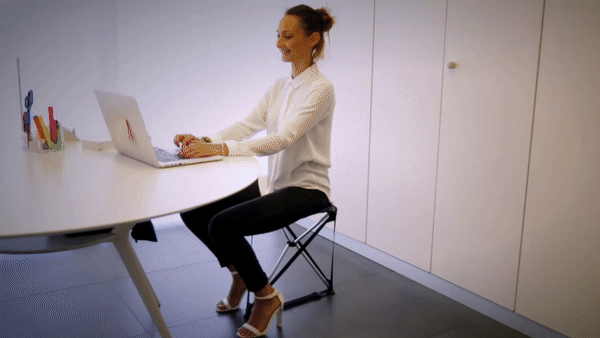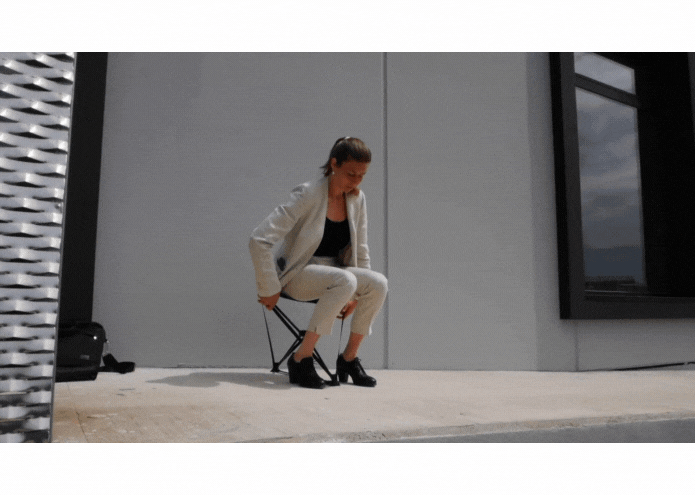The NEW CARBON BIP!
Meet the new latest version of the BIP: the ONE and ONLY with 100% Carbon Legs and TEXTILENE® seating surface! TEXTILENE®is a 100% original USA registered trade mark, is a weather proof and UVA-proof strong fabric, precisely, a high strength polyesters with PVC compound mesh fabric, specific for Outdoor!
Let’s forget about the classic definition of “Chair or "Stool”. BIP 2.0 is not a chair.
Di-Lite Design Studio redefined the same meaning of what a "CHAIR"is and invented a revolutionary bio-mechanical seating support.
Di-Lite is an Italian Engineering and Design Studio located in Tuscany, Italy.
At Di-Lite we found a new constructive principle, we patented it and applied it to a simple structure: a stool! Result was astonishing! Being a Bipod, we call it BIP!
In 2018 Designer Paolo Elmi, math and physics enthusiast and geometry fan (let’s rather say obsessed), applied architectural principles to portable furniture!
Paolo realized that re-thinking furniture in terms of TENSILE-STRUCTURES could significantly improve lightness and compactness of any kind of portable and folding outdoor and garden structures (like tables, hammocks, chairs, gazebos etc... )
(Headquarter in Tuscany - architecture by Mr. Elmi).
Examples of Tensile Structures in Architecture:
BIP is not a chair, BIP is a TENSILE-STRUCTURE that combines Tensegrity with principles of solid geometry. BIP 2.0 is therefore a structural apparatus, consisting of both tension and compression elements.
Indeed, you do not simply “sit on it”, you actually form an integrated system with your BIP 2.0!
BIP 2.0 is a Bio mechanical tension-ed support, integrated with the human body!
You do not "open" your BIP rather, you put it in tension!
You do not “close it” rather, you collapse its structure!
While you will be sitting on your BIP 2.0 then, you will feel like being pushed upwards instead of falling into a sagging fabric which is NOT spine friendly!
In common stools, the fabric seating surface is added. How can we know it? Because we can always separate the textile part from the metal skeleton. In BIP 2.0, on the contrary, the fabric cooperates with the structure or, better, the fabric is integral with the structure, forming an active and essential part of it! This means that materials are reduced to the very minimum.















